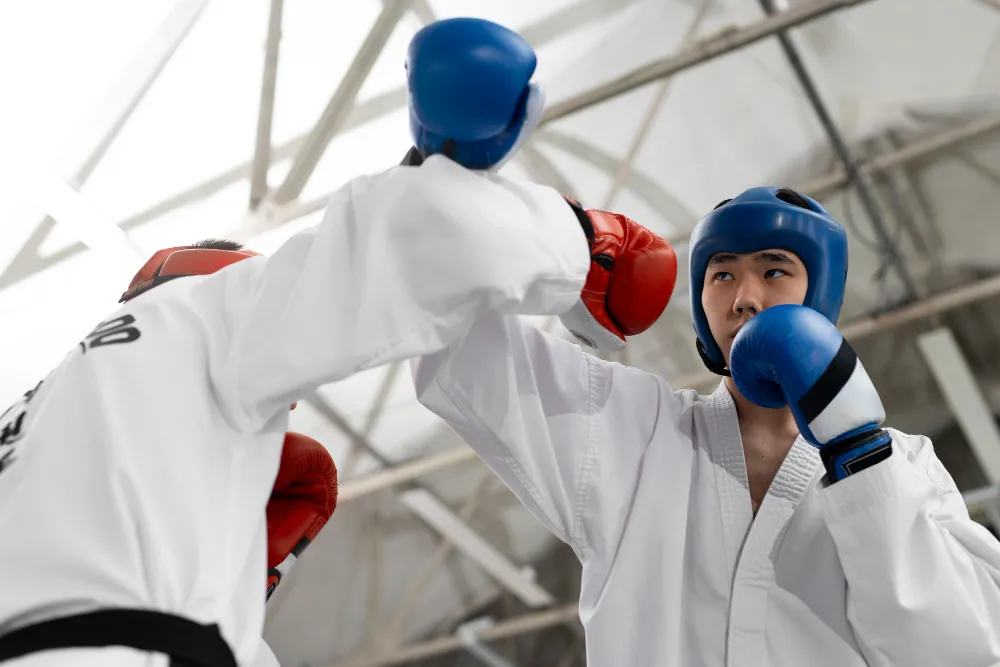Understanding the Science of Sports Protective Equipment: How It Keeps You Safe

In the world of sports, safety is a critical aspect that cannot be overlooked. With the intensity and physicality involved in many sports, the risk of injuries is ever-present. This is where protective gear comes into play. The Science of Sports Protective Equipment delves into the technology, materials, and design principles that ensure athletes stay safe while performing at their best. In this article, we will explore how this gear works, its essential role in sports, and why investing in quality protective equipment can make a world of difference for athletes at every level.
The Importance of Protective Gear in Sports
Sports can be demanding on the body, especially in high-contact sports like football, hockey, and basketball. Even in low-contact sports like cycling and skating, the risk of falls and collisions remains. Protective gear is designed to minimize the risk of injuries, allowing athletes to focus on their game without the constant fear of injury. Understanding the Science of Sports Protective Equipment is key to appreciating how these items work to keep athletes safe and reduce the severity of injuries when accidents happen.
How Protective Gear Works: The Science Explained
The Science of Sports Protective Equipment is based on the principles of physics and biomechanics. When an athlete falls, collides, or is struck, a force is applied to the body. The goal of protective equipment is to absorb, dissipate, and spread out that force over a larger area, reducing its impact on vulnerable parts of the body. This is achieved through various design features and materials that are engineered for specific functions.
- Energy Absorption and Dissipation: Protective gear, such as helmets, pads, and guards, is built to absorb and dissipate the energy from an impact. For example, a helmet uses layers of dense foam to compress upon impact, absorbing the force and reducing the shock that reaches the skull. This concept is similar across different types of protective gear, ensuring that energy from a hit or fall is not concentrated in one spot.
- Shock Absorption Materials: Many pieces of protective gear use advanced materials like high-density foams, gel padding, and viscoelastic polymers. These materials are designed to absorb shock and distribute the force evenly. In the Science of Sports Protective Equipment, these materials play a critical role in reducing injuries, as they prevent the concentration of force in one area, which can lead to bruising, fractures, or concussions.
- Ergonomic Design for Mobility and Comfort: A significant part of the science behind protective gear is creating a balance between safety and comfort. Athletes need gear that allows them to move freely without compromising protection. This is achieved through ergonomic designs that fit the body’s contours, ensuring the equipment stays in place during movement. Quality gear is not only about protection; it also provides comfort, so athletes can maintain their performance levels without distraction.
Types of Sports Protective Equipment and Their Science
Different sports require different types of protective gear, each designed to address the specific risks associated with that activity. Here’s a closer look at how the Science of Sports Protective Equipment applies to various sports:
- Helmets: Helmets are perhaps the most critical piece of protective equipment across many sports, including cycling, football, and baseball. The science behind helmets focuses on protecting the head and brain from traumatic injuries like concussions. Helmets use a hard outer shell to resist penetration and a softer inner layer, usually made of expanded polystyrene (EPS) foam, which compresses upon impact to absorb energy. This dual-layer design is crucial for reducing the risk of serious head injuries.
- Mouthguards: Often used in sports like boxing, rugby, and hockey, mouthguards protect against dental injuries and help reduce the risk of concussions. The science behind mouthguards lies in their ability to absorb shock and stabilize the jaw, preventing impact forces from reaching the brain. A properly fitted mouthguard distributes the force of an impact over a larger area, reducing the risk of damage to the teeth and gums.
- Pads and Guards: Knee pads, elbow pads, shin guards, and chest protectors are designed to protect joints and bones from direct impacts. The Science of Sports Protective Equipment in these items involves the use of shock-absorbing materials like foam and thermoplastic, which spread the impact over a larger surface area. This design minimizes the force reaching the bones and reduces the chances of fractures and bruising.
- Footwear: Footwear is another crucial element of sports protection, particularly in sports that involve running or quick directional changes. The science behind sports shoes focuses on providing stability, cushioning, and traction. Advanced materials like EVA foam and air cushions are used to absorb the shock from running and jumping, reducing the stress on the ankles, knees, and hips.
Why Investing in Quality Protective Gear Matters
When it comes to protective gear, quality should always be a priority. While cheaper options may be tempting, they often fall short in terms of durability, comfort, and, most importantly, safety. Here’s why investing in high-quality gear is essential:
- Better Protection: High-quality gear is built using superior materials and manufacturing techniques that ensure better shock absorption and durability. This is particularly important in high-risk sports, where the difference between quality gear and a cheaper alternative could be a serious injury.
- Longevity: Investing in quality gear means it will last longer, providing reliable protection over time. Quality materials are less likely to wear out or degrade quickly, ensuring that the gear remains effective for longer periods.
- Improved Comfort and Fit: Quality gear is designed with the athlete’s comfort in mind. A good fit means the gear stays in place during rigorous activities, ensuring consistent protection. This can make a significant difference in performance, as athletes can focus on their sport without discomfort or the need to constantly adjust their gear.
- Peace of Mind: Knowing that you are using high-quality protective gear provides peace of mind, allowing athletes to push their limits without fear of inadequate protection. This confidence can translate into better performance and enjoyment of the sport.
How to Choose the Right Sports Protective Equipment
Understanding the Science of Sports Protective Equipment can help athletes make more informed decisions when selecting gear. Here are some tips to ensure you choose the right equipment for your needs:
- Look for Certification: Check if the equipment meets safety standards set by organizations like ASTM, CPSC, or CE. Certified gear has been tested for safety and performance.
- Ensure Proper Fit: Ill-fitting gear can be just as dangerous as not wearing any protection. Make sure the gear fits snugly and doesn’t shift during movement.
- Research the Materials: Look for materials known for shock absorption and durability, such as high-density foams or reinforced plastics.
- Read Reviews: Reviews can provide insights into the comfort, durability, and effectiveness of the gear based on real-world use.
Conclusion: Protecting Athletes with Science
The Science of Sports Protective Equipment is a fascinating field that combines physics, biomechanics, and materials science to create gear that safeguards athletes. From helmets that absorb impacts to mouthguards that stabilize the jaw, each piece of equipment plays a vital role in reducing injury risks. Understanding how this gear works can help athletes appreciate the value of investing in quality products that offer better protection, comfort, and durability. By prioritizing safety, athletes can perform at their best and enjoy their sports with greater confidence, knowing that they are well-protected.
Stay safe and perform your best with the right protective gear. Explore top-quality options at Invictosports today and gear up for success!

